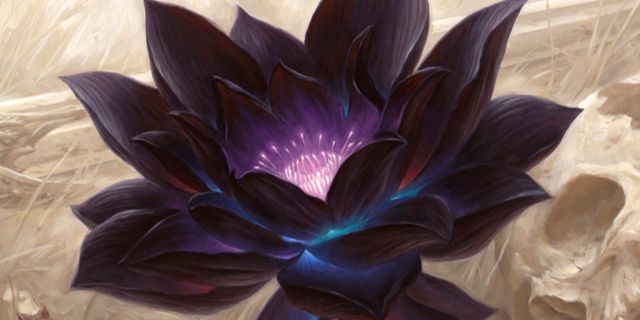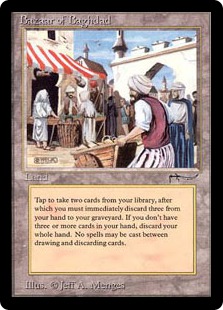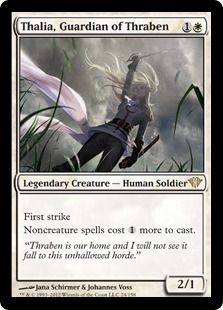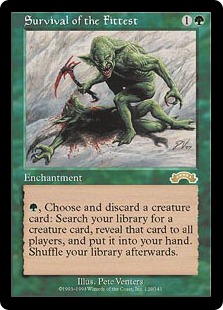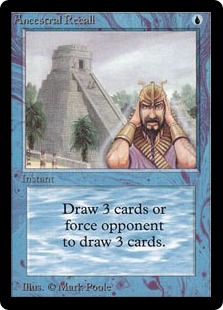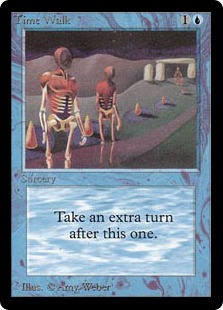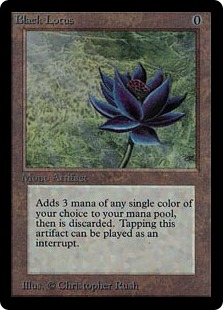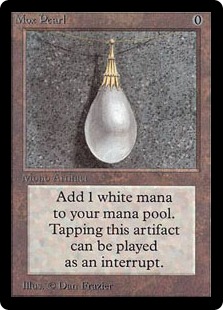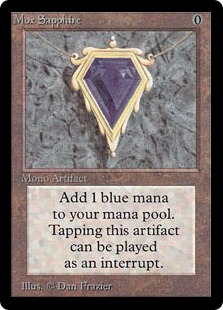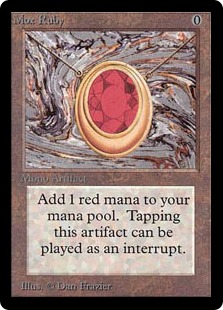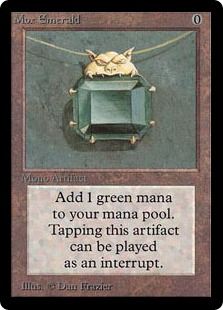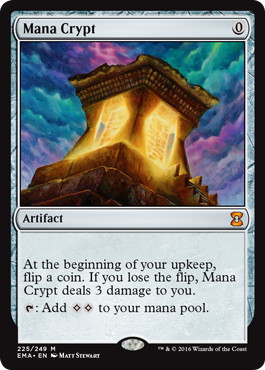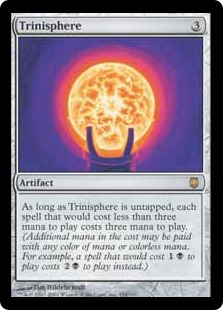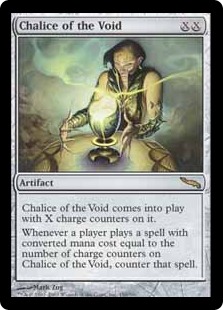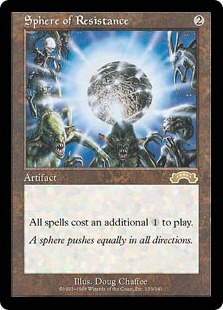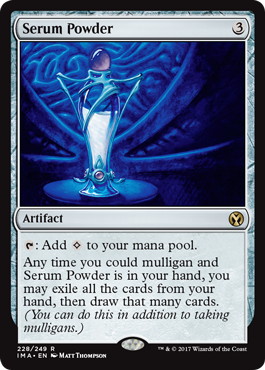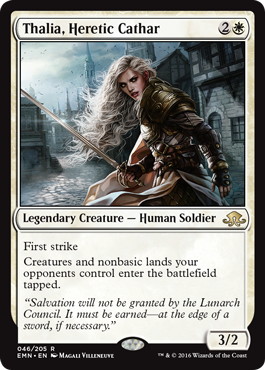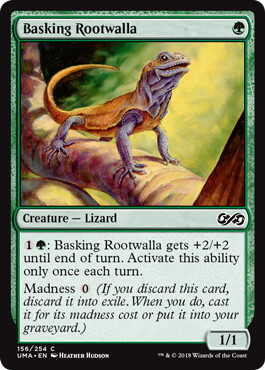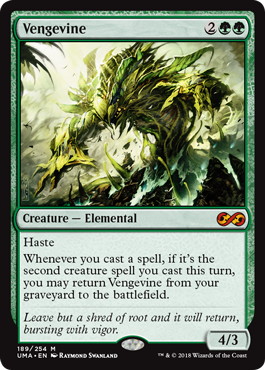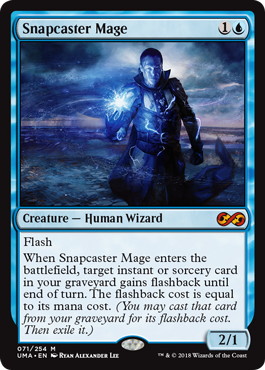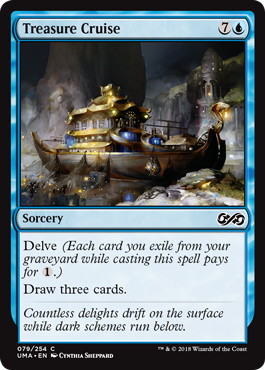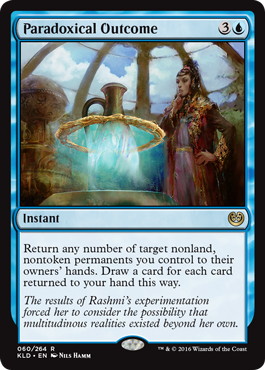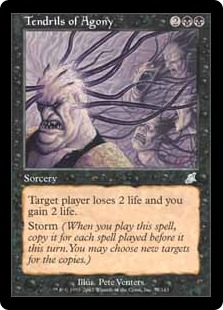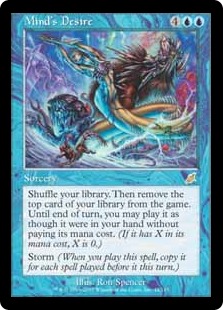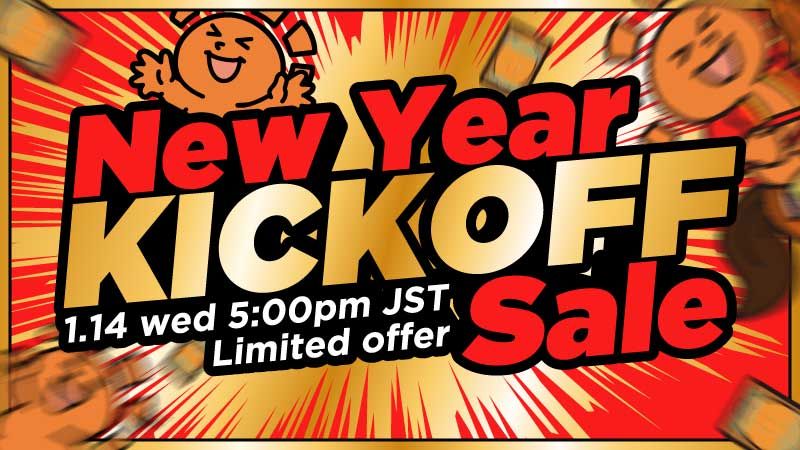Introduction
With the recent change to the Magic Online Championship (MOCS) opening a path to the Pro Tour via Vintage I decided to write about an old favorite format of mine.
There is a preeminent misconception about the format being about uninteractive turn one kills with broken cards that are not allowed anywhere else. While the latter is true and is what makes the format both special and interesting the former is far from the truth. While a lot of decks in Vintage can win on the first turn it rarely happens in practice due to the high density of interaction in every deck.
Vintage used to be held up by three pillars: 《Mishra's Workshop》, powering out otherwise expensive artifacts to lock opponents out of the game, 《Bazaar of Baghdad》 to enable graveyard decks based on the Dredge mechanic and 《Mana Drain》 to provide a huge mana-advantage for blue based control decks. With new cards entering the format however Vintage has adapted and 《Mana Drain》 has gotten too slow to reliably battle the differing threats faced by control mages. While Workshop and Bazaar are still going strong, blue decks are varied in their approach ranging from full control decks to 《Oath of Druids》 decks to 《Paradoxical Outcome》 storm decks with everything in between.
There are also lots of viable creature based decks. There are “hatebears” style decks similar to the Legacy counterpart Death and Taxes, the Eldrazi menace have made their presence known in Magic’s oldest format and 《Hollow One》 has brought back 《Survival of the Fittest》 to the forefront as well.
Vintage has not been in the spotlight of the competitive scene for a long time. Playing Vintage in paper is tough since the scarcity of cards like the Power 9. On Magic Online (MTGO) that is not an issue, but the incentive wasn’t there to really immerse yourself in a format which is so much different from what you know. That, however, has changed now. With the changes coming to the MOCS structure it is now possible to qualify for the MOCS and thereby for the Pro Tour solely by play Magic’s most powerful format. The format is still largely unexplored by a professional eye. With Standard formats getting solved ever faster Vintage is still the devil’s playground if you will.
Usually mana is the resticting factor for what you can do, and in Legacy, Vintage’s clostest relative, you rarely see cards that cost more than two mana even. With the Power 9 available and other mana enablers like 《Sol Ring》, 《Mana Crypt》 or even 《Mishra's Workshop》 legal however, that concept widens a lot and all of a sudden most things become possible. It is really the brewers paradise.
I aim to give you a short metagame breakdown for what you are most likely to face in Vintage to give you an idea on how to attack the format and hope to see you in future Vintage Leagues or challenges on the way to the Pro Tour.
The Primary Decks
Shops:
Shops is still one of the strongest archetypes, powering through many recent restrictions. The deck is based on entirely colorless cards and the backbone is 《Mishra's Workshop》. Having essentially a 《Black Lotus》 in play that you don’t need to sacrifice lets you do a bunch of crazy stuff. Most Shops decks aim to use their mana-advantage to try and stop their opponents from playing spells at all with cards like 《Trinisphere》, 《Chalice of the Void》 and 《Sphere of Resistance》. Most of these types of cards are luckily restricted now but the critical mass is still there to make the deck tick. There are many variations of this strategy but the most common lists will look something like this:
- Marc Tobiasch
- – Shops
- Test Deck
4 《Mishra's Factory》
4 《Ancient Tomb》
4 《Mishra's Workshop》
4 《Wasteland》
1 《Strip Mine》
-Land (18)- 1 《Black Lotus》
1 《Mox Pearl》
1 《Mox Sapphire》
1 《Mox Jet》
1 《Mox Ruby》
1 《Mox Emerald》
-Power 9 (6)- 4 《Walking Ballista》
2 《Hangarback Walker》
4 《Arcbound Ravager》
4 《Steel Overseer》
4 《Phyrexian Revoker》
4 《Foundry Inspector》
3 《Phyrexian Metamorph》
1 《Lodestone Golem》
1 《Triskelion》
-Creature (27)-
1 《Mana Crypt》
1 《Sol Ring》
4 《Sphere of Resistance》
1 《Thorn of Amethyst》
1 《Trinisphere》
-Spell (9)-
With recent restrictions on 《Thorn of Amethyst》, 《Lodestone Golem》 and 《Chalice of the Void》 these decks have mostly gone from full prison decks to disruptive aggro decks.
How to Fight Them
The best way to fight them is to either outmana their prison elements and kill them before their clock gets you or to sidestep their lockpieces, for example by not playing spells at all and getting back creatures from the graveyard which brings me to Dredge.
Dredge
This deck can easily win without casting a single spell all game. Lists vary from more combo-style versions to aggro with more disruption but all are essentially full on graveyard decks that will sidestep a lot of the opposing interaction.
It could look something like this:
- Marc Tobiasch
- – Dredge
- Test Deck
2 《Cabal Pit》
1 《Mana Confluence》
4 《Bazaar of Baghdad》
2 《Riftstone Portal》
1 《Strip Mine》
-Land (12)- -Power 9 (0)- 4 《Narcomoeba》
4 《Bloodghast》
4 《Stinkweed Imp》
4 《Prized Amalgam》
1 《Flame-Kin Zealot》
4 《Golgari Grave-Troll》
1 《Elesh Norn, Grand Cenobite》
-Creature (22)-
4 《Cabal Therapy》
1 《Darkblast》
2 《Life from the Loam》
1 《Ancient Grudge》
2 《Dread Return》
4 《Force of Will》
4 《Bridge from Below》
4 《Serum Powder》
-Spell (26)-
Typically these decks will always mulligan until they have 《Bazaar of Baghdad》 in their opening hand. That is why they will almost always have 《Serum Powder》 as well to increase the odds of hitting Bazaar.
How to Fight Them
The best way to battle them is to back a large amount of graveyard hate in your sideboard. That will start a sort of dance where you bring in hate while they try to guess which hate it is and react by bringing in cards to battle your hate. Sometimes they will also try to sidestep the hate though by bringing in cards like 《Hollow One》 or the 《Dark Depths》 combo, so make sure not to dilute your own gameplan too much.
Creature Decks
The next category of decks is what I would call the creature decks. While both Shops and Dredge rely on creatures to win the game the following decks are more reminiscent of Legacy style creature decks.
Eldrazi & Taxes
Everyone’s favorite Eldrazi friends have also become a mainstay in Vintage, albeit usually with a more disruptive element attached:
- Marc Tobiasch
- – Eldrazi & Taxes
- Test Deck
2 《Karakas》
4 《Cavern of Souls》
4 《Eldrazi Temple》
4 《Ancient Tomb》
4 《Wasteland》
1 《Strip Mine》
-Land (23)- 1 《Black Lotus》
1 《Mox Pearl》
1 《Mox Sapphire》
1 《Mox Jet》
1 《Mox Ruby》
1 《Mox Emerald》
-Power 9 (6)- 4 《Thalia, Guardian of Thraben》
3 《Phyrexian Revoker》
2 《Containment Priest》
3 《Thalia, Heretic Cathar》
3 《Eldrazi Displacer》
2 《Glowrider》
4 《Thought-Knot Seer》
4 《Reality Smasher》
-Creature (25)-
1 《Mana Crypt》
1 《Sol Ring》
1 《Null Rod》
1 《Thorn of Amethyst》
1 《Trinisphere》
-Spell (6)-
《Survival of the Fittest》
A more combo-style approach to a creature deck is 《Survival of the Fittest》, which was banned out of Legacy after the printing of 《Vengevine》, but is still very much legal and kicking in the powered format:
- Marc Tobiasch
- – 《Survival of the Fittest》
- Test Deck
3 《Savannah》
2 《Tropical Island》
3 《Windswept Heath》
3 《Verdant Catacombs》
2 《Misty Rainforest》
4 《Bazaar of Baghdad》
-Land (18)- 1 《Ancestral Recall》
1 《Time Walk》
1 《Black Lotus》
1 《Mox Pearl》
1 《Mox Sapphire》
1 《Mox Jet》
1 《Mox Ruby》
1 《Mox Emerald》
-Power 9 (8)- 4 《Noble Hierarch》
4 《Basking Rootwalla》
3 《Thalia, Guardian of Thraben》
1 《Containment Priest》
4 《Squee, Goblin Nabob》
2 《Elvish Spirit Guide》
4 《Vengevine》
1 《Wonder》
4 《Hollow One》
-Creature (27)-
(Editor’s Note: You can read a Deck Guide from the very first Asian Eternal Weekend champion below.)
How to Fight Them
Against these two decks games will play out more like you will be used to from Legacy or Modern albeit with a little more power obviously. Removal and a powerful gameplan of your own will be your best bet.
Blue Decks
The most diverse swath of the format is what I would dub blue decks. Blue is historically the most powerful color in Magic featuring both card draw and counterspells. This shows in Vintage the most since all those cards are legal to play.
Temur Control
Blue decks come in two main categories: Combo and Control. Both can have many guises and there are too many ways to build each style of deck to cover them all. Control will, as in other formats typically try to answer all of the opposing threats and take over with some card advantage engine. The most prominent of these decks right now will look something like this:
- Marc Tobiasch
- – Temur Control
- Test Deck
4 《Volcanic Island》
2 《Tropical Island》
4 《Scalding Tarn》
2 《Polluted Delta》
1 《Misty Rainforest》
1 《Flooded Strand》
1 《Strip Mine》
1 《Library of Alexandria》
-Land (17)- 1 《Ancestral Recall》
1 《Time Walk》
1 《Black Lotus》
1 《Mox Sapphire》
1 《Mox Ruby》
1 《Mox Emerald》
-Power 9 (6)- 3 《Snapcaster Mage》
2 《Young Pyromancer》
-Creature (5)-
4 《Mental Misstep》
2 《Flusterstorm》
2 《Lightning Bolt》
2 《Pyroblast》
1 《Gitaxian Probe》
1 《Ponder》
1 《Brainstorm》
2 《Ancient Grudge》
1 《Merchant Scroll》
4 《Force of Will》
1 《Gush》
1 《Treasure Cruise》
1 《Dig Through Time》
3 《Dack Fayden》
2 《Jace, the Mind Sculptor》
-Spell (32)-
How to Fight Them
To beat control you typically want to sidestep their interaction, which for example Dredge does really well and basically always wins preboarded games for this reason, or overload one type of interaction. The Survival deck from above does this for example since the actual number of creature removal is pretty low as a lot of the blue decks are mainly geared to beat each other.
Paradoxical Storm
Combo decks also vary wildly. Invariably they will try to produce a lot of mana and then win the game with something like a Storm card or a combination of 《Time Vault》 and 《Voltaic Key》 or simply 《Goblin Charbelcher》. One of the most powerful engines that might even be looking at a restriction sometime in the future is 《Paradoxical Outcome》:
- Marc Tobiasch
- – Paradoxical Storm
- Test Deck
2 《Underground Sea》
1 《Tundra》
2 《Scalding Tarn》
1 《Polluted Delta》
1 《Flooded Strand》
1 《Misty Rainforest》
1 《Tolarian Academy》
1 《Library of Alexandria》
-Land (12)- 1 《Ancestral Recall》
1 《Time Walk》
1 《Timetwister》
1 《Black Lotus》
1 《Mox Pearl》
1 《Mox Sapphire》
1 《Mox Jet》
1 《Mox Ruby》
1 《Mox Emerald》
-Power 9 (9)- 1 《Snapcaster Mage》
1 《Monastery Mentor》
-Creature (2)-
2 《Repeal》
1 《Gitaxian Probe》
1 《Ponder》
1 《Brainstorm》
1 《Flusterstorm》
2 《Hurkyl's Recall》
2 《Night's Whisper》
1 《Merchant Scroll》
1 《Demonic Tutor》
1 《Yawgmoth's Will》
4 《Paradoxical Outcome》
1 《Tendrils of Agony》
4 《Force of Will》
1 《Mind's Desire》
1 《Dig Through Time》
4 《Mox Opal》
1 《Lotus Petal》
1 《Mana Crypt》
2 《Sensei's Divining Top》
1 《Sol Ring》
1 《Mana Vault》
-Spell (37)-
How to Fight Them
Combo decks will usually have a low land count and will try to cast a lot of cheap spells to get to their combo finish. 《Sphere of Resistance》 decks can therefore often completely lock them out of the game. Otherwise the usual disruption of counterspells or discard spells are the way to go to beat this type of strategy as well as permanent based disruption like 《Kambal, Consul of Allocation》 which has been seeing more play in sideboards.
Summary and Conclusion
There are many more types of strategies being seen in Vintage. You could face Lands decks, Fish decks (which is an old term referring to small creatures backed up with counterspells) the aforementioned Oath decks which are a hybrid of control and combo and typically strong against creature decks and many many more. Also I believe that there are whole swaths of decks which could be very strong but are yet to be discovered. I see a bright future for Vintage if determined players and deckbuilders start attacking the format from new angles and am rapt to see how it develops.
To figure out how to attack a format that is as varied as Vintage is to find the ways in which differing decks and archetypes are similar and try to find ways to take advantage of permeating weak spots while dodging answers that see wide play.
The points to attack are:
When I first started playing Vintage I built a budget deck that attacked the format in a new way and got rewarded with a lot of easy wins against unprepared opponents. The power-level in general has gone up since but I believe it is still possible to find ways to get a leg up on the competition if you manage to attack a number of these points while not being weak to them yourself.
I hope I have managed to excite you somewhat about the prospect of playing Vintage and I hope you can find something you like playing or even find a new archetype worth exploring.
Happy brewing and fighting with the most powerful and iconic cards in the history of the game.


